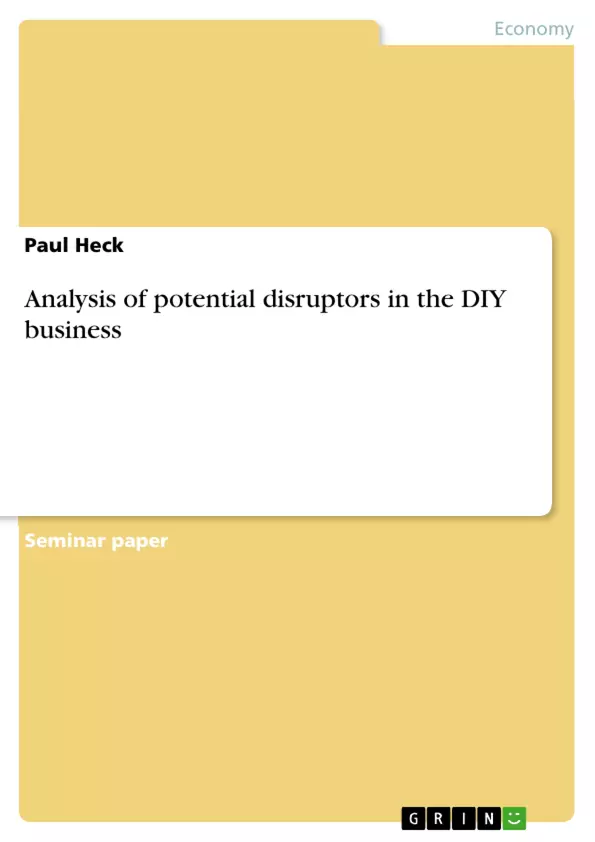The do-it-yourself (DIY) industry is in a state of upheaval. More and more classic DIY store sales are migrating to online retailers. The large DIY store operators are being hit by the strong competition from Amazon & Co. At the same time, new market platforms such as ManoMano are entering the market with a specialized range of products. Obi and the other DIY store companies are resisting the "Amazonisation" and trying to keep up. Therefore alternative concepts are needed, which should be the result of this
paper.
Inhaltsverzeichnis (Table of Contents)
- Introduction
- OBI
- Company Key figures
- Current business model
- Digital Activities
- ManoMano
- Company Key figures
- Business Model
- Disruption potential for OBI
- Recommendations for OBI
- From Cross- to Omni-Channel
- Pop-Up-Stores
- Shop-in-Shop Format
- Conclusion
- List of References
Zielsetzung und Themenschwerpunkte (Objectives and Key Themes)
The paper analyzes the DIY industry, which is currently undergoing significant changes. It explores the challenges faced by traditional DIY retailers, such as OBI, due to the rise of online competitors like Amazon and specialized platforms like ManoMano. The paper aims to identify potential disruptors and provide recommendations for OBI to adapt and thrive in this evolving market.
- The increasing shift of DIY sales from physical stores to online platforms
- The competitive pressure from online giants like Amazon and specialized marketplaces like ManoMano
- The need for OBI to adapt its business model to remain competitive in the digital age
- The analysis of OBI's current business model and its digital activities
- Recommendations for OBI to adopt strategies like omni-channel, pop-up stores, and shop-in-shop formats
Zusammenfassung der Kapitel (Chapter Summaries)
- Introduction: This chapter sets the stage for the paper by introducing the current state of the DIY industry, highlighting the increasing online presence and competition faced by traditional retailers. The chapter highlights the need for OBI to develop alternative strategies to address these challenges.
- OBI: This chapter provides a comprehensive overview of OBI, including its history, key figures, current business model, and digital activities. It explores OBI's strengths and weaknesses in the face of evolving consumer preferences and market trends.
- ManoMano: This chapter examines the disruptive potential of ManoMano, a specialized platform for DIY products. It analyzes ManoMano's business model and its potential to impact OBI's market position.
- Recommendations for OBI: This chapter proposes various recommendations for OBI to enhance its competitiveness in the face of disruption. It explores strategies like embracing an omni-channel approach, exploring pop-up stores, and adopting a shop-in-shop format.
Schlüsselwörter (Keywords)
The key terms and concepts explored in this paper include DIY industry, online retail, digital disruption, business model innovation, omni-channel strategy, pop-up stores, shop-in-shop formats, Amazon, ManoMano, OBI, customer segmentation, value proposition, and competitive advantage.
- Citation du texte
- Paul Heck (Auteur), 2020, Analysis of potential disruptors in the DIY business, Munich, GRIN Verlag, https://www.grin.com/document/909265



